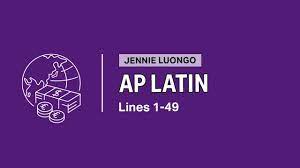The Comprehensive Guide to AP Microeconomics
"Are you ready to dive into the world of microeconomics, unravel the intricate forces of supply and demand, and conquer the AP Microeconomics test? Prepare to unleash your economic mastery with Admit Hero. Get ready to analyze market behavior, understand consumer choices, and unlock the secrets of economic decision-making. We have curated a comprehensive guide to help you navigate the nuances of the AP Microeconomics test and achieve remarkable success."
Essential Strategies to Excel in the AP Microeconomics Test:
- Master the Core Concepts: To excel in AP Microeconomics, you must have a solid grasp of foundational concepts. Start by focusing on the following areas:
- Supply and Demand: Understand the principles of supply and demand and how they interact to determine market equilibrium. Learn to analyze the effects of changes in supply and demand on price and quantity.
- Consumer and Producer Behavior: Study consumer choices and producer decision-making. Familiarize yourself with concepts such as utility maximization, profit maximization, cost analysis, and production functions.
- Market Structures: Gain knowledge of different market structures, including perfect competition, monopolistic competition, oligopoly, and monopoly. Understand the characteristics, behavior, and efficiency implications of each market structure.
- Practice Graphical Analysis: AP Microeconomics heavily relies on graphical analysis to illustrate economic concepts and relationships. Enhance your skills in graphical analysis with these strategies:
- Graph Interpretation: Learn to interpret and analyze different types of economic graphs, such as supply and demand curves, cost curves, and market structures. Understand how changes in variables affect these graphs and the corresponding economic outcomes.
- Diagram Labeling: Practice labeling and accurately identifying key components and points on economic graphs. This will help you effectively communicate your understanding of economic concepts in written responses.
- Real-World Application: The AP Microeconomics test often includes questions that require the application of economic principles to real-world scenarios. Strengthen your ability to apply economic concepts with these tips:
- Stay Informed: Keep up with current economic news and developments. Read reputable news sources and publications to understand how economic principles apply to real-world situations.
- Case Studies: Engage in case studies and real-life examples that showcase economic concepts. Analyze how economic factors influence decision-making in various industries and evaluate the economic impact of policies and events.
Frequently Asked Questions about the AP Microeconomics Test:
Q: How much math is involved in AP Microeconomics? A: AP Microeconomics involves basic mathematical concepts, such as algebra and graphing. While not excessively math-intensive, understanding mathematical relationships and being comfortable with graphing is essential to effectively analyze and explain economic concepts.
Engaging Question: "Can you imagine unlocking the secrets behind pricing strategies, market behavior, and economic decision-making? How will mastering the AP Microeconomics test equip you with the skills to make informed choices, understand economic patterns, and thrive in a world driven by supply and demand?"
Conclusion: Conquering the AP Microeconomics test requires a combination of core concept mastery, graphical analysis skills, and real-world application of economic principles. With Admit Hero as your guide, you can confidently navigate the complexities of microeconomics and excel in the AP Microeconomics exam. By following our strategies, practicing graphical analysis, and applying economic principles to real-world scenarios, you will be well-prepared to tackle the test and achieve outstanding results. Remember, the world of microeconomics is dynamic and impactful, but with determination and the right approach, you can unlock the doors to economic understanding and pave your way to a successful future.

 By
By


